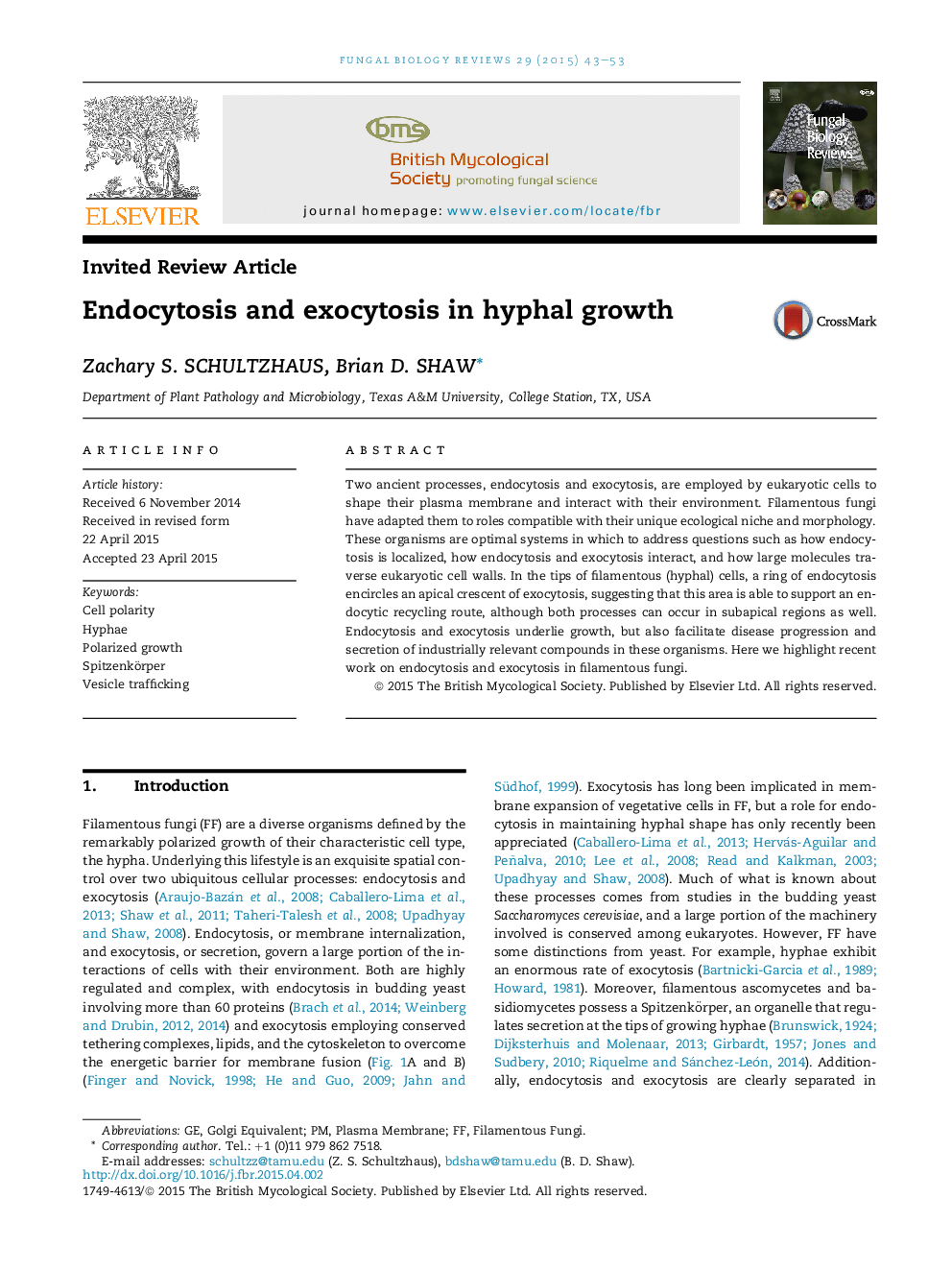| Article ID | Journal | Published Year | Pages | File Type |
|---|---|---|---|---|
| 2180454 | Fungal Biology Reviews | 2015 | 11 Pages |
•Knowledge of the exocytic and endocytic machinery in filamentous fungi is detailed.•Methods used by the cell to polarize endocytosis and exocytosis are discussed.•Evidence for the importance of endocytic recycling in hyphae is presented.•The roles for endocytosis and exocytosis in host-pathogen interactions are discussed.
Two ancient processes, endocytosis and exocytosis, are employed by eukaryotic cells to shape their plasma membrane and interact with their environment. Filamentous fungi have adapted them to roles compatible with their unique ecological niche and morphology. These organisms are optimal systems in which to address questions such as how endocytosis is localized, how endocytosis and exocytosis interact, and how large molecules traverse eukaryotic cell walls. In the tips of filamentous (hyphal) cells, a ring of endocytosis encircles an apical crescent of exocytosis, suggesting that this area is able to support an endocytic recycling route, although both processes can occur in subapical regions as well. Endocytosis and exocytosis underlie growth, but also facilitate disease progression and secretion of industrially relevant compounds in these organisms. Here we highlight recent work on endocytosis and exocytosis in filamentous fungi.
